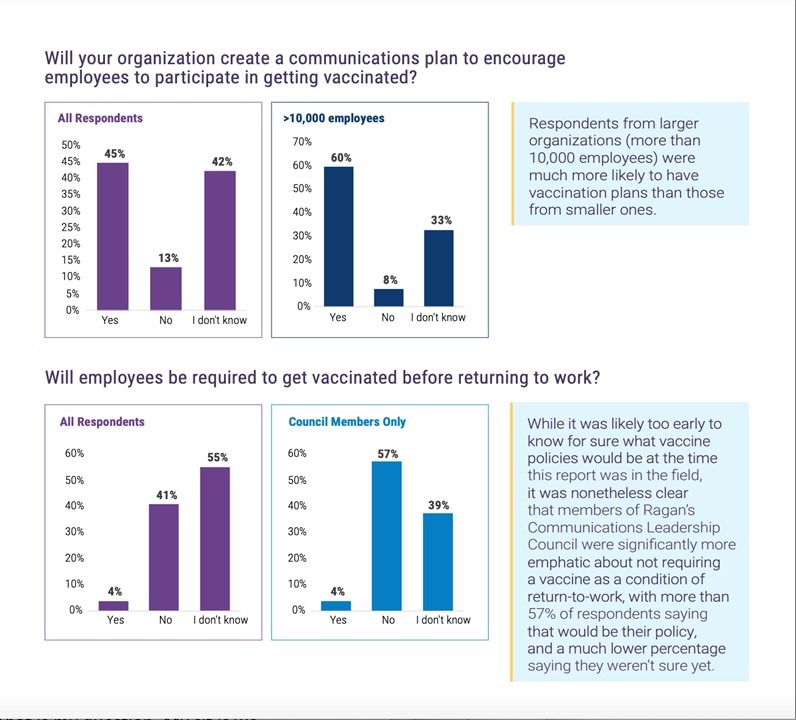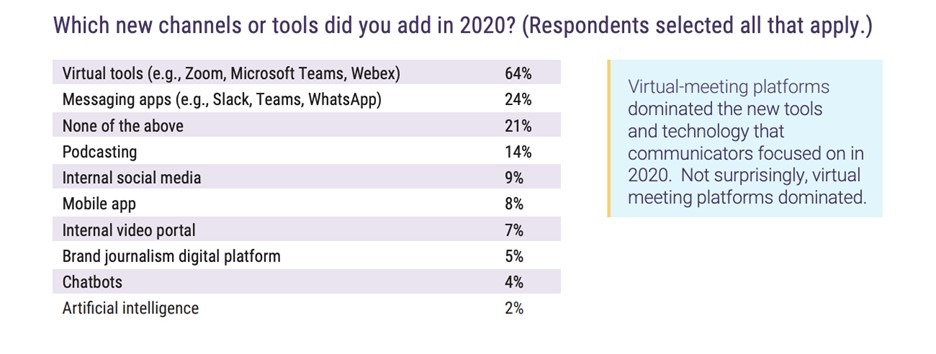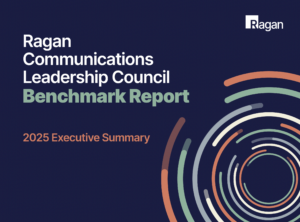As return-to-work strategies take shape, a comprehensive Ragan report offers key insights
Ragan’s exclusive Communications Leadership Council Benchmark Report sheds light on office remodeling, social distancing, hybrid work and more.

This spring organizations everywhere are occupied with mapping out the conditions and processes for the return to the workplace. It’s a multifaceted challenge, arguably much more complex than last year’s move to remote work.
It involves decisions about the physical configuration of the workplace itself, both for enhanced workplace safety and in many instances, to reflect a shift in purpose. Will offices be the same as always, or will they transform to some new function, such as for collaboration and ideation going forward?
In addition, organizations have to make decisions around vaccination before employees return. Should returning workers be vaccinated as a requirement? Is it encouraged but not mandated? Then there are decisions around the makeup of the hybrid workforce. Who should come back to the workplace, and how frequently? Will hybrid work be the norm, perhaps twice a week in the office and the rest of the time at home? What about workers who’ve moved out of the area? How will equity be defined for the workforce on these questions?
All of these things have to be decided and then communicated. Plans have to be clearly laid out and distributed repeatedly, using multiple channels across organizations. Also, workers should be given a voice.
Earlier this year, Ragan’s Communications Leadership Council anticipated these questions when it fielded a comprehensive survey on communications priorities, and then compiled and published the findings in the 2021 Communications Benchmark Report.
The benchmark report, based on 755 qualified responses from internal and external communicators worldwide, includes a section on communications priorities, return to work, and what the workplace will look like going forward. Nearly half of respondents anticipate an office relocation or remodeling, driven by safety concerns and social distancing. But 35% said that is not anticipated.
[EXECUTIVE SUMMARY: Communications Benchmark Report 2021]
An overwhelming majority of the respondents—67%—said they anticipate remote or flexible-work arrangements will be a permanent option going forward. Only 14% said that won’t happen at their organizations. Nearly 20% don’t know. Respondents split on whether returning to the workplace will result in the need for extensive remodeling and long-term social distancing. It likely was too early to know.

On the subject of vaccinations, 55% of respondents said they didn’t know whether employees will be required to be vaccinated before returning to work. About 40% said no, and just 4% said yes—employees would be required to have been vaccinated before returning to work. Among organizations with more than 10,000 employees, the percentage of those requiring a vaccine as a condition of returning to work drops to 2%.

Then there’s technology. The events of last year accelerated tech adaption. Naturally, communicators see an increased reliance on mobile communications going forward. The task of communicators has been to effectively leverage new tools to enable virtual communications, measure their efforts, improve efficiency, and encourage engagement across the workforce. But in a real sense, communicators themselves have been challenged merely to keep up. We are looking at a future of multiple corporate headquarters: the physical headquarters and the digital workplace headquarters.
Virtual communications technology is naturally the area of most interest, but one clear pattern emerges in this section. Some products (many of them free) dominate in some areas, but generally, there’s no consensus around a given solution. Different organizations use different products, depending on their own needs assessments.

One important development from the work-from home dynamic over the last 12 months is some valuable new organizational dynamics. For example, 42% of respondents said they’ve forged stronger relationships with other departments, and a quarter said they’ve gained a seat at the table in strategic decision making. And more than 20% said they have better access to the CEO.
And that’s essential for communicators if they’re to perform at maximum capacity.
Download a copy of Ragan’s third annual Communications Benchmark Report executive summary here. To obtain a full copy of Ragan’s 2021 Communications Benchmark Report become a member of the Communications Leadership Council. Click here for more details.






